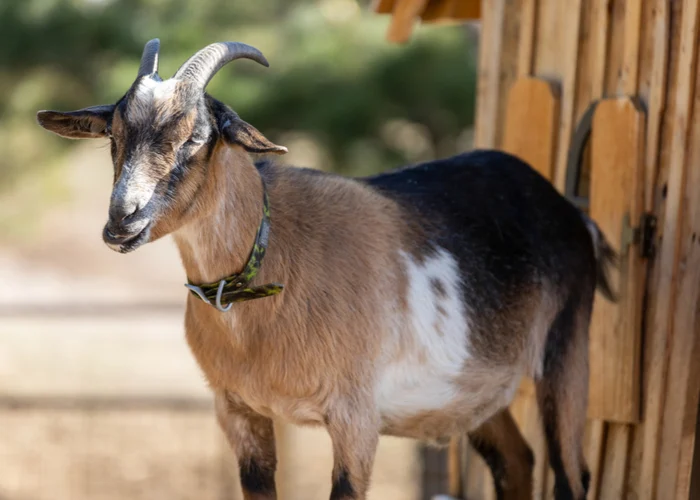
Description:
A tiny goat with proportionately sound body type and dairy conformation. The ears are medium in length and upright, and the facial profile is straight or slightly concave. Its length ranges from short to medium. Occasionally have blue eyes. He is a man with a thick beard.
The Nigerian Dwarf comes in a wide range of color combinations, similar to other breeds, with the most popular being black, dark brown, and gold in various patterns. Once more, this kind of goat has short, fine hair.

Behavior:
Nigerian dwarf goats are often kind, polite, and sociable animals. They are simple to train. They are particularly well-liked as pets because of their amiable personality, little stature, and vibrant look. They are simple to control. The young of the Nigerian dwarf goat can be bottle-fed. And by doing this, they will become closer to you and your family.
Benefits/Uses:
Nigerian dwarf goats are kept both as pets and for milk production.
Origin/History:
A diminutive breed of dairy goat is called a Nigerian Dwarf. The American Minor Breeds Conservancy has designated them as a rare breed from their initial importation from West Africa in the middle of the 1970s.
Keeping as pet:
- Housing
To keep them out of the rain, snow, wind, and sun, you must offer housing for them in the form of a barn, shed, or sizable dog house. The finest fencing we have discovered is four foot high (minimum) by 16 foot long graduated livestock panels. You must install a strong fence. Remember that keeping your goats where you want them and safeguarding them from dogs and coyotes—their main predators—are your two main objectives when you consider fencing. With the exception of trained livestock guardian dogs, never leave your goats in the care of a dog or dogs! Goats are prey, while dogs are predators.
- Food/Water
Animals that are mature and not breeding can be kept alive only on high-quality hay or browse. Fresh water is always a must for goats. You should offer a loose mineral supplement made specifically for goats that contains copper. A salt block, leftover fruits and vegetables, pecan, oak, fruit, pine, spruce/cedar, maple, and willow prunings are just a few of the extras that goats appreciate. Avoid harmful plants like rhododendron, azalea, yew (looks like spruce but has no aroma), laurel, and cherry, as well as mold in hay and grain. They have a very low dosage toxicity. Have an activated charcoal tube on hand and ready to use if you are worried about the plants they may be consuming.
Never abruptly alter the goat’s diet; always add new foods or extras in tiny amounts; and prevent overeating. Men should maintain a low protein, low calcium diet since they are more likely than women to develop kidney/urinary tract stones (calculi). Urinary calculi can be avoided by achieving a mineral balance with a goat-formula mineral supplement. Since it is a urine acidifier, adding food-grade ammonium chloride at a rate of 1.5 lbs. per 25 pounds of loose mineral aids in the prevention and breakdown of calculi. However, exercise caution as it may result in urine scald.
Table





